The general cargo ship is the oldest of merchant ships, dating back to when man first began to move cargo across water. It is essentially an empty shell, filled with cargo loaded aboard one piece at a time. This cargo, known as break-bulk, can be anything from bolts of cloth to heavy equipment like trucks and industrial equipment. Traditionally, even liquids and bulk cargoes like grain were packaged up and moved aboard such ships, although the 19th century saw the creation of specialized bulk carriers and tankers for such cargo.
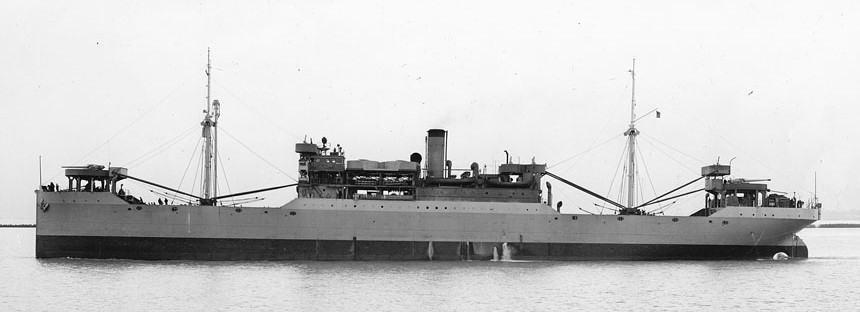
Three-island cargo ship Vega
Until the advent of containerization and other systems for improved handling of non-bulk cargo, break-bulk ships moved most of the world's general cargo. Typically, these ships were in the "three-island" layout, with their engines under the bridge amidships, and a forecastle and poop providing accommodation for the crew. Except for the engines, the entire main body of the ship was taken up by a number of holds, each loaded and unloaded through a hatch in the deck above it. Most ports were quite primitive and provided little more than a place to tie up, so cargo was handled by the ship's own booms, which usually limited loads to 10 tons or less. Initially, hatches were fairly small, which meant a lot of work inside the holds to make sure they were properly filled, increasing turnaround time and cost.
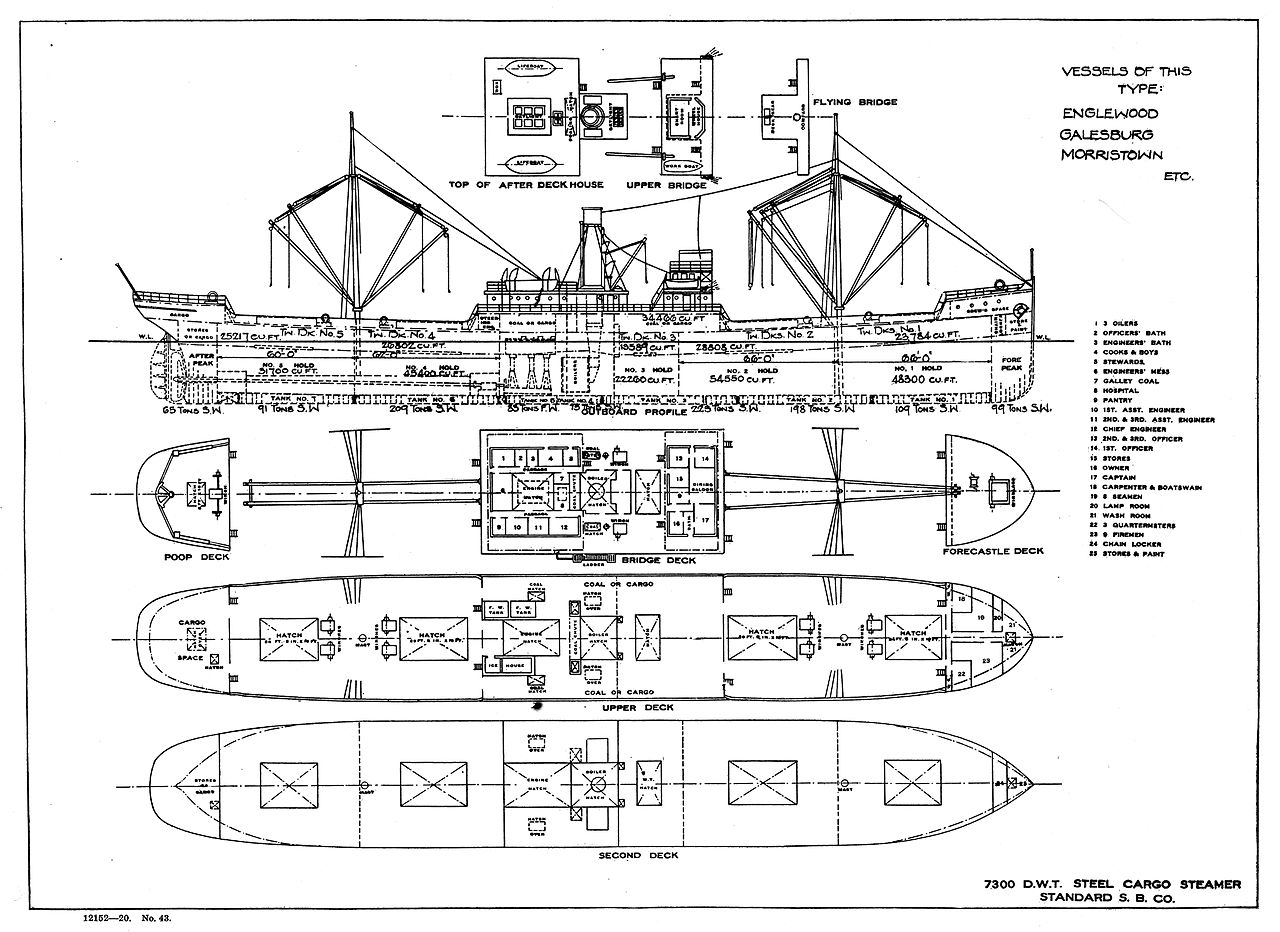
Plans for a typical cargo ship c.1920
By the start of the 20th century, general cargo ships had divided into two different branches, liners and tramps. Liners were vessels which operated on published schedules, usually between major ports, and would ship cargo at standard rates for anyone who asked.1 Tramps had no such regularity, being chartered for specific cargoes and moving from port to port as the demands of international trade drove them. This trade originated with vessels trading mainly in coal, and while bulk cargoes like coal, grain and ore were always a mainstay of the tramp trade, tramps would usually take any cargo they could get. Liners were usually larger and faster than tramps, and often had tween decks2 mounted in their holds to make it easier to stow the smaller lots of cargo that made up most of a liner's payload. Tramps' holds were usually unencumbered, to better accommodate bulk cargoes.
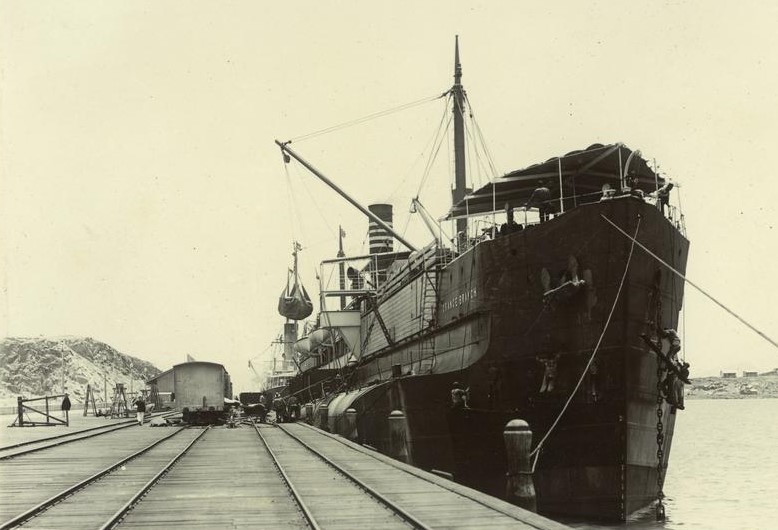
A turret deck ship loading cargo with its booms
A number of specialized subvariants of the general cargo ship were developed over the years. Some were intended for specialized trades, like heavy-lift ships, fitted with high-capacity booms for cargoes such as locomotives, really heavy industrial equipment and boats. Others were intended to be cheaper to operate or more versatile. These often involved attempts to game the complicated tonnage regulations. Some were fairly reasonable, like shelter-deck ships that had an upper deck built over the main deck with openings which could be closed if bulky cargoes needed to be carried. For normal cargoes, they'd be left open, reducing the ship's official tonnage, and thus its port duties. Others were more extreme in their attempts to game the tonnage-based fee system, such as the turret deck ship, which had a narrow upper deck over the main cargo deck, resulting in odd-looking ships that had to pay smaller fees until the measurement system was changed to close the relevant loophole.
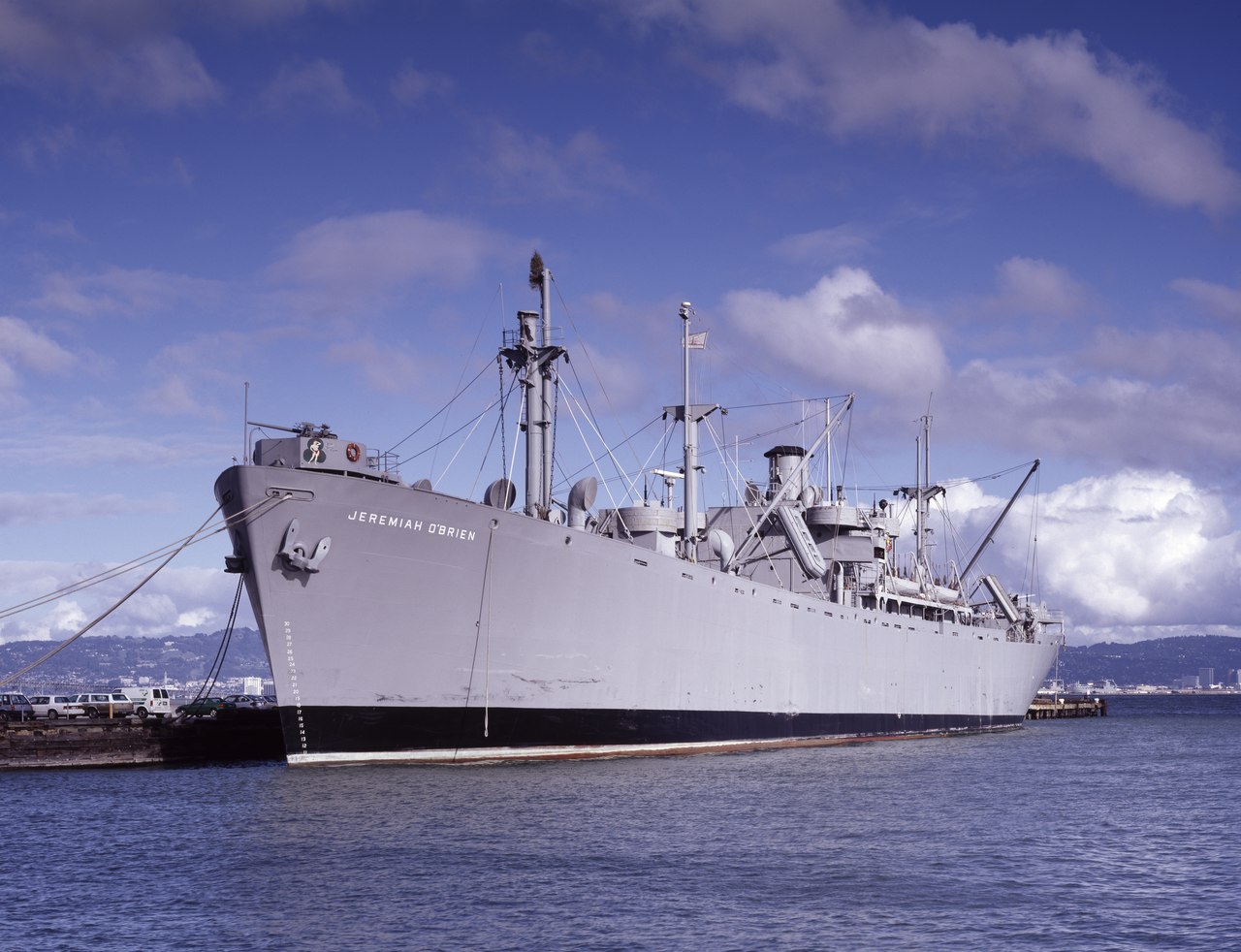
Liberty Ship Jeremiah O'Brien
The first half of the 20th century saw surprisingly little change in cargo ships. Reciprocating engines gave way to turbines, and oil pushed out coal, allowing crews to shrink. Standard vessels grew, particularly in the aftermath of the world wars that saw standardized ships, such as the Liberty and Victory types, built in the hundreds. Postwar, so many Liberty ships were turned over to commercial operators as surplus that the 10,000 ton load one could carry became the de facto standard size for a tramp contract. Victories were common on the liner trade after the war, although there was enough pent-up demand that shipbuilding continued to go at full speed when peace finally came. One major change in the postwar years was the widespread adoption of diesel engines, which were more fuel-efficient and required fewer men than the steam engines they replaced.
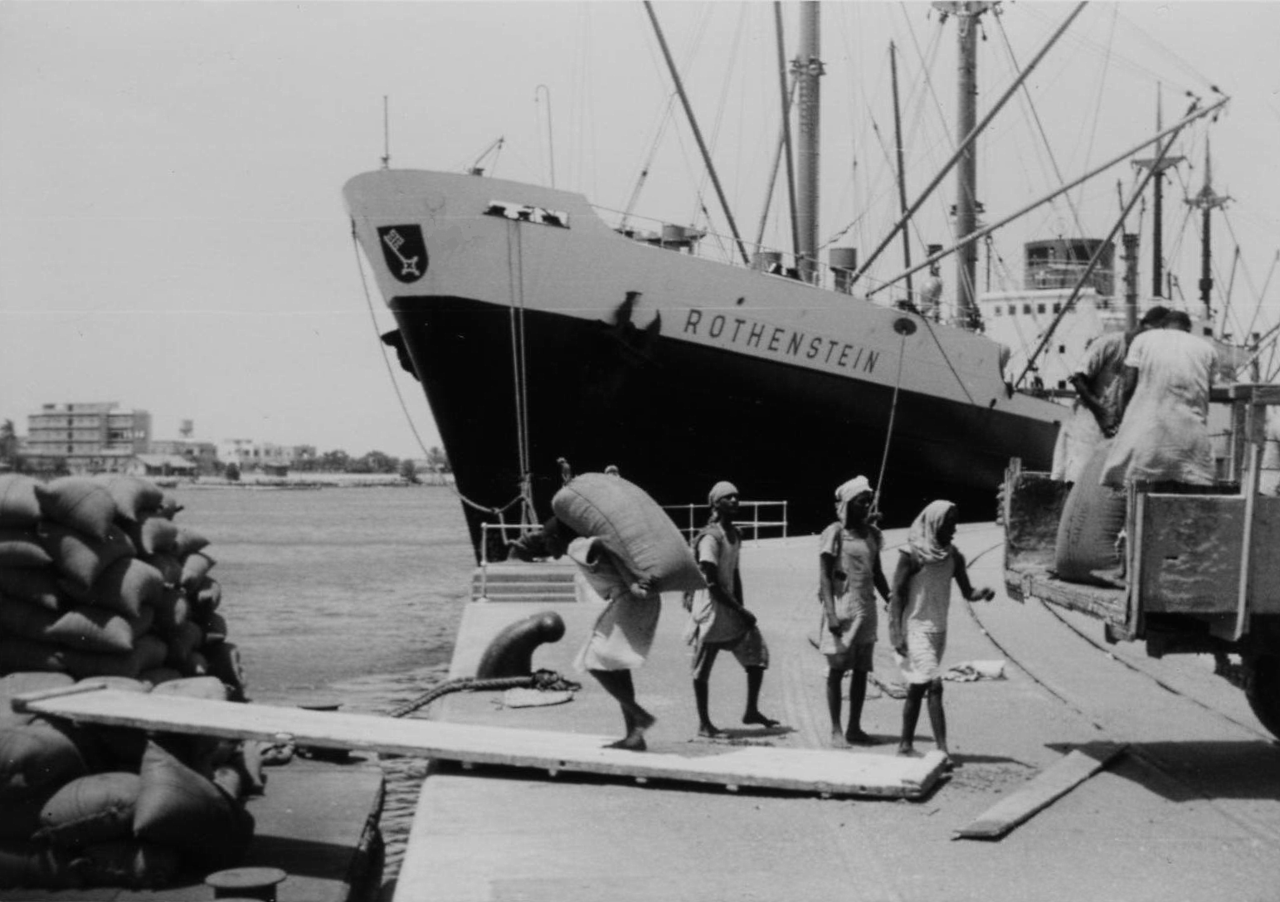
Stevedores carry bagged cargo aboard a break-bulk ship in the 1960s
Another major issue postwar shippers faced was port costs, both direct and indirect. Existing methods were labor-intensive, even though better structural design techniques had made wider hatches possible and higher-capacity booms could handle larger loads. This meant high costs, particularly as dockworker unions in Western countries won higher wages. Ships spent half their time in port, which didn't earn their owners any money, and accumulated between 60 and 70% of their costs while sitting still. Some new way of loading and unloading cargo would be needed, and while multiple systems were tried, the ultimate winner would be the now-ubiquitous shipping container.
1 Just to be clear, a cargo liner is not the same thing as an ocean (passenger) liner. Both are called liners because they operate on published schedules and provide service to the general public. Cargo liners often carried a few passengers, and passenger liners would carry a bit of cargo, often time-sensitive and valuable cargo like mail, but the distinction was generally very clear as to the main purpose of the ship. ⇑
2 An abbreviation of "between deck(s)" that amounted to another deck to stow cargo on. ⇑

Comments
Incredible to think that all shipping in WWII was unloaded the old-fashioned way, although you can see the early development of containers in the paletteized load units.
Found a short training video for liberty ship cargo handling, which made the giant tangle of booms and lines a bit less mysterious: https://youtu.be/Y4PZae5Dlso
The clip of a stevedore's "basic" tools at the end makes you realize what tremendously skilled labour it was. Training enough men for cargo handling must have been as big a job as building the ships, and it's amazing there were relatively few spontaneous explosions during handling.
That is a good find. Thanks. There's also an Army cargo handling manual here that should have most of the same stuff.
One thing I found particularly interesting in the video was that a lot of the shots had black and white soldiers working together. Not just blacks doing the work supervised by a white officer, but you'd have three guys doing the rigging and two were black. This was not common at the time, but I suppose it was done for training purposes to make sure that there wasn't unrest when they showed the film to segregated units of either race.
One of the largest industrial disasters in US history occurred was caused by a fire aboard a Liberty Ship.
The Grandcamp, a French-registered ex-Liberty Ship was docked in Texas City, taking on a load of bags of ammonium nitrate fertilizer. Around 8am, on April 16, 1947, there was a fire reported in the holds, which were then almost full of fertilizer.
At first, the crew tried to fight the fire with water. However, they reported that every time the fire was apparently extinguished, a red glow would return and the ammonium nitrate would re-ignite. The captain then ordered the hatches to be closed and the holds to be flooded with steam. Normally, this extinguishes a fire by starving it of oxygen, but in the case of ammonium nitrate, this was a fatal mistake. Ammonium nitrate, when it's heated, breaks down into nitrous oxide gas and oxygen. Flooding the hold with steam greatly increased the temperature inside the hold and accelerated this process.
This breakdown accelerated as more and more steam was flooded into the hold. Eventually, the pressure of the steam and the nitrous oxide gas blew the hatches open, letting even more oxygen into the hold, turning the ship into a giant fuel-air bomb. Spectators noted that the water around the ship was boiling, and water was flashing to steam as it splashed against the hull, testifying to the tremendous temperatures inside the holds. They also noted the strange yellow color of the smoke rising from the ship, characteristic of air loaded with various nitrogen oxides.
At 9:12am the ship blew up, leveling over a thousand buildings in Texas City itself, and shattering windows in Galveston, nearly 10 miles away. Large portions of the ship itself were converted into shrapnel, which, along with the blast, killed all of the crew who had remained aboard the Grandcamp, almost all of the bystanders (who thought they were standing at a safe distance) and all but one of Texas City's volunteer firefighting force. The blast was strong enough to knock two sightseeing aircraft, who had been watching the fire from above, out of the air, and hurled Grandcamp's anchor, weighing about two tons, more than a mile inland. The official total of people killed came out to 567, though we will never know the true figure, because some people were totally obliterated by the blast, and either no remains were found or remains were too badly damaged to be identified.
Since then, ammonium nitrate has been treated much more like the high explosive it is, rather than the innocuous fertilizer it was thought to be, though, even today, there are still large explosions caused by ammonium nitrate fires.